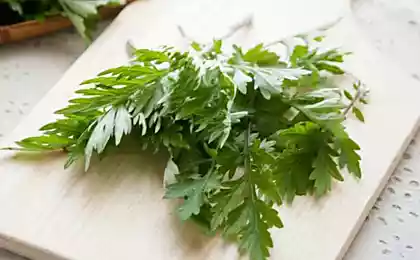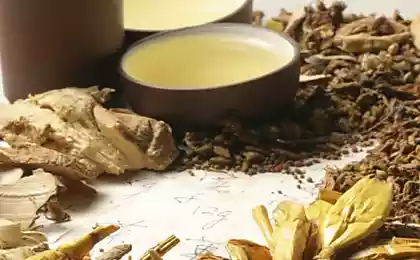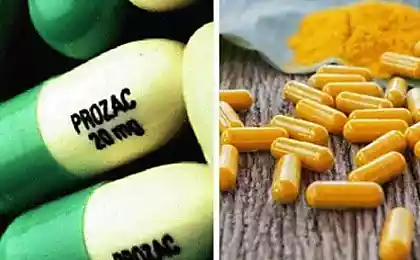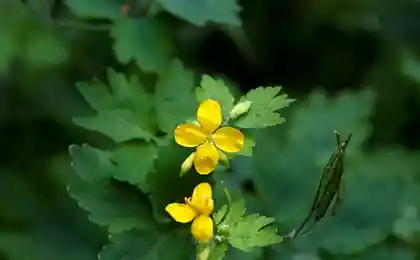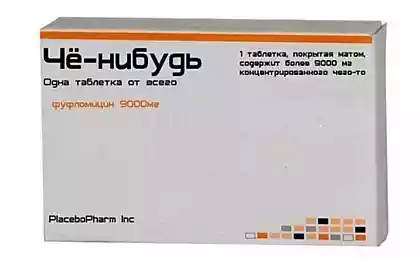647
25 long-forgotten Indian medicines
When it comes to treatment, we rarely use more than 3-5 of herbs. Now it's hard to imagine how people used without pharmacy. But we know that Indian shamans have developed a healing circle, very similar to a Yin/Yang in medicine. The use of herbal medicines and other alternative forms of treatment was the best medicine in their time. It was a holistic treatment approach that largely relied on plants and their unique benefits.
Native American shamans and healers did not finish University, but they were known for their powers of observation — have studied in detail the properties of all plants and, perhaps, partly by trial and error, and partly by observing the behavior of sick animals, and determined which plants possess the desired properties.
From the roots, flowers or pollen they were doing teas and pastas that were taken inside or ointment and a poultice applied externally.
The endless list of herbs, healing properties of which is constantly duplicated, you can select a list of those that will be of use to you for your green kit. It's amazing how similar this list to the one used by our herbalists in folk medicine.
1. Alfalfa: AIDS digestion and is used to improve blood clotting. Modern use includes the treatment of arthritis, bladder and kidneys and improves bone strength. Strengthens the immune system.
2. Aloe Vera: a Popular houseplant. Thick sheets is compressed to extrude a thick juice, which can be used to treat burns, insect bites and wounds.
3. Pine: Needle, green cones and inner bark are added to the tea. Used as standard treatment for respiratory distress syndrome and congestion in the chest.
4. Bee pollen: When mixed with food it can increase energy, improve digestion and strengthen the immune system. If you are allergic to bee stings you most likely will have allergies to bee pollen.
5. Wax: Used as a topical ointment for burns and insect bites, including bee stings. Is intended only for external use.
6. BlackBerry: the Root, bark and leaves when crushed and grinding in a tea used to treat diarrhea, reduces inflammation and stimulates the metabolism. Rinse it treats sore throats, mouth ulcers and gingivitis.
7. Black Raspberries: the Roots of this plant are crushed and used as tea or cooked and chewed to relieve cough, diarrhea, and General intestinal distress.
8. Buckwheat: Seeds are used in soups and in porridge for reducing blood pressure, helps with blood clotting and eases diarrhea.
9. Cayenne: the Pods are used as a pain reliever when eating or added to tea. Also used when the risk of arthritis and gastrointestinal disorders. It is sometimes applied to wounds in powder form to increase blood flow and use as an antiseptic and anesthetic, to numb the pain.
10. Chamomile: leaves and flowers are used in tea to treat intestinal problems and nausea.
11. Cherry: Widely used in Indian tribes for the treatment of various diseases, the berries are seedless dried and crushed into teas or poultices. It was used to treat coughs, colds, flu, nausea, inflammation and diarrhea. In ointments or pripadkah it is used to treat burns and wounds. Bones in the bird cherry — in the same way as Apple seeds are poisonous in high concentrations. Be sure that you clean the berries from the seed, if you plan to use them for any purpose.
12. Echinacea: Also known as Echinacea purpurea, is a classic Indian medication, which is used to strengthen the immune system, fight infections and fever. It is also used as an antiseptic and General treatment of cold, cough and flu.
13. Eucalyptus: oil from the leaves and roots is a common treatment used in tea to treat coughs, sore throat, flu and fever. She is used to this day in an ingredient in cough drops.
14. Fennel: Use in tea or chewed to relieve cough, sore throat, improve digestion, alleviate diarrhea and for treating colds. Besides used as a poultice for the eyes and headaches.
15. Mint: Used in native American tribes to treat coughs, colds, respiratory distress and as a cure for diarrhoea and stimulant for blood circulation.
16. Valerian: the Root as an infusion in tea relieves pain in the muscles, pain and is used as a sedative.
17. Ginger root: Another super tool in Indian medicine, the root is crushed and consumed with food, as a tea or the ointment or poultice. Known to this day its ability to improve the digestive system, it is also anti-inflammatory, helps circulation and can ease colds, coughs and flu and bronchitis and joint pains.
18. Ginseng: This is another popular herb which dates back its history in different cultures for millennia. The roots were used by Indians as a dietary Supplement, teas and poultices for the treatment of fatigue, a tonic, strengthening the immune system and overall strengthening of the liver and lungs. Leaves and stems were also used, but the root has the highest concentration of active ingredients.
19. Goldenrod: is usually seen today for treatment of allergies and sneezing, but the Indians, it was considered the all-in-one. It was added to tea in addition to food and local ointment is used to treat bronchitis, colds, flu, inflammation, pain in the throat and as an antiseptic for cuts and abrasions.
20. Honeysuckle: the Berries, stems, flowers and leaves are used to treat bee stings and skin infections. In tea, it is used to treat colds, headaches and sore throat. It also has anti-inflammatory properties.
21. Hops: In the tea, it is used to treat digestive issues and is often mixed with other herbs or plants, such as aloe, to soothe your muscles. It is also used to calm toothaches and sore throat.
22. Licorice: the Roots and leaves can be used for coughs, colds, sore throat. The root can also be chewed to relieve toothache.
23. Red clover It grows everywhere and flowers, leaves and roots, as a rule, give in tea, or used in salads. It is used to reduce inflammation, improve blood circulation and treat respiratory diseases.
24. Wild rose: These are red orange berries, the fruits of wild roses. It is now known that it is a source of vitamin C, it is eaten whole, crushed into a tea or added to food it is used to treat colds and coughs, intestinal disorders, as an antiseptic and to treat inflammation.
25. Rosemary: a member of the pine family are used in food and as tea for the treatment of pain in muscles, improves circulation and as a General cleansing for metabolism. published by P. S. And remember, only by changing their consumption — together we change the world! ©
Join us in Facebook and Vkontakte, and we're Classmates
Native American shamans and healers did not finish University, but they were known for their powers of observation — have studied in detail the properties of all plants and, perhaps, partly by trial and error, and partly by observing the behavior of sick animals, and determined which plants possess the desired properties.
From the roots, flowers or pollen they were doing teas and pastas that were taken inside or ointment and a poultice applied externally.
The endless list of herbs, healing properties of which is constantly duplicated, you can select a list of those that will be of use to you for your green kit. It's amazing how similar this list to the one used by our herbalists in folk medicine.
1. Alfalfa: AIDS digestion and is used to improve blood clotting. Modern use includes the treatment of arthritis, bladder and kidneys and improves bone strength. Strengthens the immune system.
2. Aloe Vera: a Popular houseplant. Thick sheets is compressed to extrude a thick juice, which can be used to treat burns, insect bites and wounds.
3. Pine: Needle, green cones and inner bark are added to the tea. Used as standard treatment for respiratory distress syndrome and congestion in the chest.
4. Bee pollen: When mixed with food it can increase energy, improve digestion and strengthen the immune system. If you are allergic to bee stings you most likely will have allergies to bee pollen.
5. Wax: Used as a topical ointment for burns and insect bites, including bee stings. Is intended only for external use.
6. BlackBerry: the Root, bark and leaves when crushed and grinding in a tea used to treat diarrhea, reduces inflammation and stimulates the metabolism. Rinse it treats sore throats, mouth ulcers and gingivitis.
7. Black Raspberries: the Roots of this plant are crushed and used as tea or cooked and chewed to relieve cough, diarrhea, and General intestinal distress.
8. Buckwheat: Seeds are used in soups and in porridge for reducing blood pressure, helps with blood clotting and eases diarrhea.
9. Cayenne: the Pods are used as a pain reliever when eating or added to tea. Also used when the risk of arthritis and gastrointestinal disorders. It is sometimes applied to wounds in powder form to increase blood flow and use as an antiseptic and anesthetic, to numb the pain.
10. Chamomile: leaves and flowers are used in tea to treat intestinal problems and nausea.
11. Cherry: Widely used in Indian tribes for the treatment of various diseases, the berries are seedless dried and crushed into teas or poultices. It was used to treat coughs, colds, flu, nausea, inflammation and diarrhea. In ointments or pripadkah it is used to treat burns and wounds. Bones in the bird cherry — in the same way as Apple seeds are poisonous in high concentrations. Be sure that you clean the berries from the seed, if you plan to use them for any purpose.
12. Echinacea: Also known as Echinacea purpurea, is a classic Indian medication, which is used to strengthen the immune system, fight infections and fever. It is also used as an antiseptic and General treatment of cold, cough and flu.
13. Eucalyptus: oil from the leaves and roots is a common treatment used in tea to treat coughs, sore throat, flu and fever. She is used to this day in an ingredient in cough drops.
14. Fennel: Use in tea or chewed to relieve cough, sore throat, improve digestion, alleviate diarrhea and for treating colds. Besides used as a poultice for the eyes and headaches.
15. Mint: Used in native American tribes to treat coughs, colds, respiratory distress and as a cure for diarrhoea and stimulant for blood circulation.
16. Valerian: the Root as an infusion in tea relieves pain in the muscles, pain and is used as a sedative.
17. Ginger root: Another super tool in Indian medicine, the root is crushed and consumed with food, as a tea or the ointment or poultice. Known to this day its ability to improve the digestive system, it is also anti-inflammatory, helps circulation and can ease colds, coughs and flu and bronchitis and joint pains.
18. Ginseng: This is another popular herb which dates back its history in different cultures for millennia. The roots were used by Indians as a dietary Supplement, teas and poultices for the treatment of fatigue, a tonic, strengthening the immune system and overall strengthening of the liver and lungs. Leaves and stems were also used, but the root has the highest concentration of active ingredients.
19. Goldenrod: is usually seen today for treatment of allergies and sneezing, but the Indians, it was considered the all-in-one. It was added to tea in addition to food and local ointment is used to treat bronchitis, colds, flu, inflammation, pain in the throat and as an antiseptic for cuts and abrasions.
20. Honeysuckle: the Berries, stems, flowers and leaves are used to treat bee stings and skin infections. In tea, it is used to treat colds, headaches and sore throat. It also has anti-inflammatory properties.
21. Hops: In the tea, it is used to treat digestive issues and is often mixed with other herbs or plants, such as aloe, to soothe your muscles. It is also used to calm toothaches and sore throat.
22. Licorice: the Roots and leaves can be used for coughs, colds, sore throat. The root can also be chewed to relieve toothache.
23. Red clover It grows everywhere and flowers, leaves and roots, as a rule, give in tea, or used in salads. It is used to reduce inflammation, improve blood circulation and treat respiratory diseases.
24. Wild rose: These are red orange berries, the fruits of wild roses. It is now known that it is a source of vitamin C, it is eaten whole, crushed into a tea or added to food it is used to treat colds and coughs, intestinal disorders, as an antiseptic and to treat inflammation.
25. Rosemary: a member of the pine family are used in food and as tea for the treatment of pain in muscles, improves circulation and as a General cleansing for metabolism. published by P. S. And remember, only by changing their consumption — together we change the world! ©
Join us in Facebook and Vkontakte, and we're Classmates
